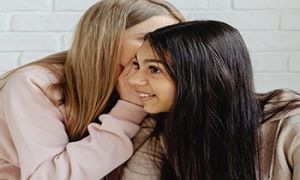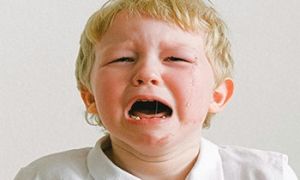Here’s a step-by-step guide to programming and planning using EYLF. This guide also includes: How Do You Gather Information About Children's Interests, Strengths, and Learning Styles?, How Do You Analyze Observations To Identify Learning Outcomes?, How Do You Analyze Observations To Plan And Implement Further Learning Opportunities?, What Other Evidence Can Be Gathered To Intergrate Learning Opportunities Onto The EYLF Program and more.
1. Observe
- Gather information about children's interests, strengths, and learning styles.
- Use methods like anecdotal records, learning stories, and photographs.
2. Assess
- Analyze observations to identify learning opportunities.
- Link findings to EYLF learning outcomes.
3. Plan
- Design activities that align with EYLF principles.
- Ensure experiences are intentional and support children's development.
4. Implement
- Put the planned activities into action.
- Encourage engagement and interaction through play-based learning.
5. Reflect
- Evaluate the effectiveness of activities.
- Adjust future plans based on observations and feedback.
How Do You Gather Information About Children's Interests, Strengths, and Learning Styles?
Gathering information about children's interests, strengths, and learning styles is a crucial part of programming and planning in the Early Years Learning Framework (EYLF). Here are some effective ways to do it:
1. Observations
- Watch how children engage in activities, interact with peers, and express themselves.
- Take notes, photos, or videos to document their behaviors and preferences.
- Use learning stories to capture moments that highlight their interests.
2. Conversations & Engagement
- Ask open-ended questions like:“What do you like to do the most?” or “Tell me about your favorite game.”
- Listen to children's thoughts and ideas during play or storytelling.
- Take note of the topics and themes that excite them.
3. Play-Based Assessment
- Offer a variety of activities (art, music, role play, puzzles) and observe what they gravitate toward.
- Notice whether they prefer independent exploration or group collaboration.
- Identify which activities challenge them and which ones come naturally.
4. Family & Caregiver Input
- Talk to parents and guardians about children's favorite activities at home.
- Collaborate with families to understand children's unique cultural experiences and learning preferences.
- Encourage families to share photos or stories about their child's achievements and passions.
5. Learning Style Observation
- Visual learners: Enjoy looking at pictures, observing patterns, and watching demonstrations.
- Auditory learners: Respond well to songs, storytelling, and verbal instructions.
- Kinesthetic learners prefer hands-on activities, movement, and interactive experiences.
6. Reflection & Documentation
- Use journals, portfolios, or digital records to track developmental progress.
- Make connections between observations and EYLF learning outcomes.
- Adjust future plans based on children's evolving interests and strengths.
Example:
Here's an example of how an educator might gather information about a child's interests, strengths, and learning styles:
Scenario: Observing a Child’s Learning Preferences
Child: Mia, 4 years old
Observation Method: Learning Story & Anecdotal Notes
Observation
During free play, Mia is drawn to the creative arts area, specifically painting. She spends extended periods experimenting with colors and textures, often mixing paints and narrating what she is creating. She also enjoys storytelling, using puppets and props to create imaginative narratives. However, in structured activities, she appears hesitant to engage in group discussions but comfortably interacts in small groups or one-on-one settings.
Information Gathered
- Interests: Art, storytelling, imaginative play.
- Strengths: Creativity, self-expression, independence.
- Learning Style: Visual & Kinesthetic – Learns best through hands-on exploration and creative engagement.
How Do You Analyze Observations To Identify Learning Outcomes?
Analyzing observations to identify learning outcomes in the Early Years Learning Framework (EYLF) involves making connections between children's behaviors, actions, and developmental milestones. Here's a structured approach:
Step 1: Review Your Observations
- Gather your notes, photos, videos, and learning stories.
- Identify key themes, behaviors, and interests displayed by the child.
Step 2: Identify Skills & Behaviors
- Determine what the child is demonstrating in terms of social, emotional, cognitive, or physical development.
- Consider whether the child is displaying problem-solving, creativity, communication, or cooperation.
Step 3: Link to EYLF Learning Outcomes
Align the observation with the five EYLF outcomes:
- Children have a strong sense of identity – Confidence, independence, self-awareness.
- Children connect with and contribute to their world – Social skills, teamwork, respect for diversity.
- Children have a strong sense of wellbeing – Physical health, emotional resilience, self-regulation.
- Children are confident and involved learners – Curiosity, persistence, problem-solving.
- Children are effective communicators – Language development, non-verbal skills, literacy.
Example
Here's an example of how an educator links the observation to the EYLF Learning Outcomes.
Scenario: Observing a Child’s Learning Preferences
Child: Mia, 4 years old
Observation Method: Learning Story & Anecdotal Notes
Observation
During free play, Mia is drawn to the creative arts area, specifically painting. She spends extended periods experimenting with colors and textures, often mixing paints and narrating what she is creating. She also enjoys storytelling, using puppets and props to create imaginative narratives. However, in structured activities, she appears hesitant to engage in group discussions but comfortably interacts in small groups or one-on-one settings.
Information Gathered
- Interests: Art, storytelling, imaginative play.
- Strengths: Creativity, self-expression, independence.
- Learning Style: Visual & Kinesthetic – Learns best through hands-on exploration and creative engagement.
Linking to EYLF Learning Outcomes
- Outcome 1 (Sense of identity)—Mia expresses herself confidently through art and storytelling.
- Outcome 4 (Confident and Involved learners) – She demonstrates curiosity and persistence in experimenting with colors and textures.
- Outcome 5 (Effective Communicators) – Uses expressive language and visual storytelling to communicate ideas.
How Do You Analyze Observations To Plan And Implement Further Learning Opportunities?
Analyzing observations is a key step in programming and planning with the Early Years Learning Framework (EYLF). It involves intentional planning to support children's learning, development, and engagement.
Step 1: Identify Children's Interests & Learning Needs
- Use observations and discussions to understand the child's needs and interests.
- Consider their strengths, challenges, and learning styles (visual, auditory, kinesthetic).
2. Link to EYLF Learning Outcomes
Each activity should connect to at least one of the five EYLF learning outcomes based on the observation:
- Children have a strong sense of identity – Activities that build confidence, independence, and self-awareness.
- Children connect with and contribute to their world – Experiences that encourage social interactions, cultural awareness, and community involvement.
- Children have a strong sense of wellbeing – Activities that promote emotional resilience, physical health, and self-regulation.
- Children are confident and involved learners – Play-based learning that fosters curiosity, problem-solving, and creativity.
- Children are effective communicators – Language-rich experiences that enhance verbal, non-verbal, and literacy skills.
3. Choose Activity Types
Select activities that encourage exploration, creativity, and engagement:
- Sensory Play (e.g., water play, sandpit exploration) – Supports well-being and learning confidence.
- Art & Creativity (e.g., painting, storytelling) – Encourages communication and self-expression.
- Outdoor Learning (e.g., gardening, nature walks) – Builds connections with the world.
- Group Activities (e.g., role-playing, teamwork challenges) – Develops social and communication skills.
- STEM Exploration (e.g., building with blocks, experimenting with colors and textures) – Enhances problem-solving and inquiry-based learning.
4. Incorporate Play-Based & Child-Led Learning
- Allow children to take the lead in activities by offering flexible materials and open-ended challenges.
- Encourage peer collaboration, creativity, and independence.
Example
Here's an example of how an analyzes observations to plan and implement further learning opportunities.
Scenario: Observing a Child’s Learning Preferences
Child: Mia, 4 years old
Observation Method: Learning Story & Anecdotal Notes
Observation
During free play, Mia is drawn to the creative arts area, specifically painting. She spends extended periods experimenting with colors and textures, often mixing paints and narrating what she is creating. She also enjoys storytelling, using puppets and props to create imaginative narratives. However, in structured activities, she appears hesitant to engage in group discussions but comfortably interacts in small groups or one-on-one settings.
Information Gathered
- Interests: Art, storytelling, imaginative play.
- Strengths: Creativity, self-expression, independence.
- Learning Style: Visual & Kinesthetic – Learns best through hands-on exploration and creative engagement.
Linking to EYLF Learning Outcomes
- Outcome 1 (Sense of identity)—Mia expresses herself confidently through art and storytelling.
- Outcome 4 (Confident and Involved Learners)— She demonstrates curiosity and persistence in experimenting with colors and textures.
- Outcome 5 (Effective Communicators) – Uses expressive language and visual storytelling to communicate ideas.
Next Steps: Planning a Learning Experience
- Activity Idea: Create a collaborative mural where Mia can experiment with colors while interacting with peers.
- Goal: Foster confidence in group interactions while nurturing her creative strengths.
- Educator Role: Encourage storytelling through art, helping Mia build confidence in peer-led conversations.
This activity idea from "Mia's Observation" can now be added to the program.
Wrap Up
To integrate learning opportunities from observations into an EYLF program plan, follow these steps:
-
Analyze Observations: Review the observations to identify children's interests, strengths, and areas for development. Look for patterns or recurring themes.
-
Link to EYLF Outcomes: Match the identified interests and skills to the EYLF learning outcomes. This ensures the program aligns with the framework's goals.
-
Plan Activities: Design activities that build on the observed interests and skills. For example, if a child shows interest in nature, plan outdoor exploration activities.
-
Document the Connection: Clearly document how each activity links to the observation and EYLF outcomes. This provides a rationale for the planned experiences.
-
Collaborate: Involve families and colleagues in the planning process. Their insights can enrich the program and ensure it meets the children's needs.
-
Evaluate and Reflect: After implementing the activities, reflect on their effectiveness. Use further observations to refine the program.
What Other Evidence Can Be Gathered To Intergrate Learning Opportunities Onto The EYLF Program
To gather evidence for integrating learning opportunities into the EYLF program, consider the following:
-
Children's Work Samples: Collect drawings, crafts, or written work that reflect their interests and developmental progress.
-
Photographs and Videos: Document moments of engagement, collaboration, or exploration during activities.
-
Anecdotal Records: Write brief notes about significant interactions, achievements, or challenges observed during play or structured activities.
-
Parent and Family Input: Gather insights from families about children's interests, routines, and cultural practices.
-
Learning Stories: Create narratives that highlight children's experiences and learning moments.
-
Checklists and Rating Scales: Use tools to track developmental milestones and skills.
-
Peer Observations: Collaborate with colleagues to gain different perspectives on children's learning and behavior.
-
Community Engagement: Include evidence from children's participation in community events or interactions with local environments.
These pieces of evidence can be linked to EYLF outcomes to create a comprehensive and responsive program.
Is Writing A Daily Reflection Of Days Activities Important?
Writing daily reflections is very important, especially in the context of the EYLF framework. Here's why:
-
Evaluate Effectiveness: Daily reflections allow educators to assess whether planned activities achieved their intended learning outcomes. This helps in refining future plans.
-
Understand Children's Needs: Reflections often highlight children's responses, interests, and areas where they may need additional support or encouragement.
-
Track Progress: They provide a continuous record of children's developmental journey and help educators adapt their approaches.
-
Improve Practice: Reflecting helps educators identify what worked well and what could be improved in their teaching methods or activity setups.
-
Support Collaboration: Documenting daily reflections enables meaningful conversations with colleagues and families, creating a shared understanding of children's experiences.
-
Comply with EYLF Requirements: EYLF emphasizes reflective practice as one of its core principles to improve the quality of early learning programs.
You could integrate your reflections into the program by documenting successes, challenges, and ideas for future activities.
Example
Here’s an example of a daily reflection for an EYLF program:
Date: April 5, 2025
Reflections:
Today, the children showed a strong interest in the new sensory bin filled with colored rice and small animal figurines. They spent a significant amount of time exploring textures, sorting animals by type, and engaging in imaginative play. This activity supported EYLF Learning Outcome 4: "Children are confident and involved learners," particularly as they demonstrated problem-solving skills and creativity.
A few children extended the play by creating a narrative about the animals traveling through a jungle, showcasing storytelling abilities. This aligns with Outcome 5: "Children are effective communicators."
On the other hand, the outdoor group activity, a beanbag toss game, had mixed success. While a few children actively participated, others seemed disengaged. Reflecting on this, I believe it might help to modify the activity to include more collaborative elements to encourage group interaction.
For tomorrow, I plan to introduce a group storytelling session inspired by today’s sensory play. Additionally, I'll create an obstacle course for outdoor play to engage more children. Parent feedback about children’s preferences will also be sought to refine activity planning.
The planning side of programming involves using the information collected from various sources to write the curriculum plan. The experiences and activities listed on the curriculum plan, are intentional are intended to achieve a learning outcome based on the EYLF. This means all the experiences planned and which children are engaged in on a daily basis, have an outcome and are planned to be available on that specific day.
Further Reading
The Planning Cycle To Document Children's Learning
5 Stages Of The EYLF Planning Cycle
The Cycle of Planning




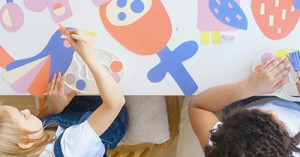


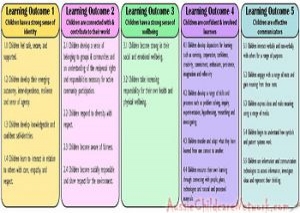 Here is the list of the EYLF Learning Outcomes that you can use as a guide or reference for your documentation and planning. The EYLF
Here is the list of the EYLF Learning Outcomes that you can use as a guide or reference for your documentation and planning. The EYLF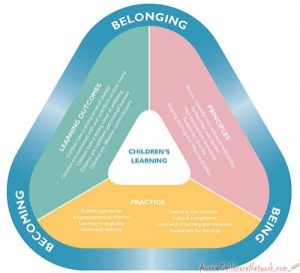 The EYLF is a guide which consists of Principles, Practices and 5 main Learning Outcomes along with each of their sub outcomes, based on identity,
The EYLF is a guide which consists of Principles, Practices and 5 main Learning Outcomes along with each of their sub outcomes, based on identity, This is a guide on How to Write a Learning Story. It provides information on What Is A Learning Story, Writing A Learning Story, Sample
This is a guide on How to Write a Learning Story. It provides information on What Is A Learning Story, Writing A Learning Story, Sample One of the most important types of documentation methods that educators needs to be familiar with are “observations”. Observations are crucial for all early childhood
One of the most important types of documentation methods that educators needs to be familiar with are “observations”. Observations are crucial for all early childhood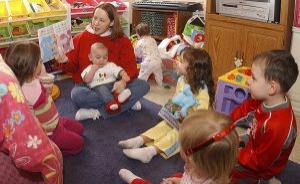 To support children achieve learning outcomes from the EYLF Framework, the following list gives educators examples of how to promote children's learning in each individual
To support children achieve learning outcomes from the EYLF Framework, the following list gives educators examples of how to promote children's learning in each individual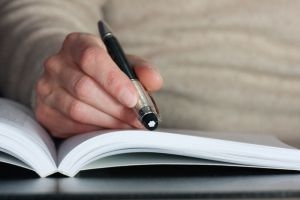 Reflective practice is learning from everyday situations and issues and concerns that arise which form part of our daily routine while working in an early
Reflective practice is learning from everyday situations and issues and concerns that arise which form part of our daily routine while working in an early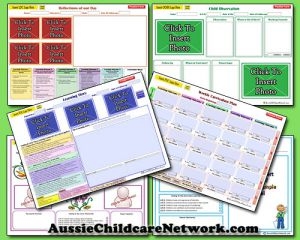 Within Australia, Programming and Planning is reflected and supported by the Early Years Learning Framework. Educators within early childhood settings, use the EYLF to guide
Within Australia, Programming and Planning is reflected and supported by the Early Years Learning Framework. Educators within early childhood settings, use the EYLF to guide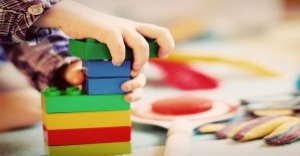 When observing children, it's important that we use a range of different observation methods from running records, learning stories to photographs and work samples. Using
When observing children, it's important that we use a range of different observation methods from running records, learning stories to photographs and work samples. Using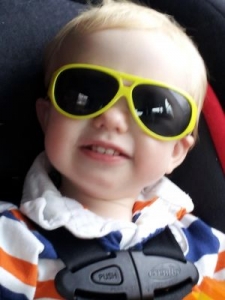 This is a guide for educators on what to observe under each sub learning outcome from the EYLF Framework, when a child is engaged in
This is a guide for educators on what to observe under each sub learning outcome from the EYLF Framework, when a child is engaged in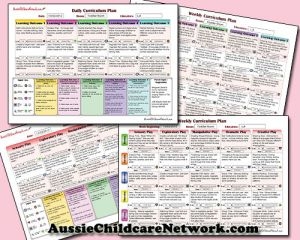 The Early Years Learning Framework describes the curriculum as “all the interactions, experiences, activities, routines and events, planned and unplanned, that occur in an environment
The Early Years Learning Framework describes the curriculum as “all the interactions, experiences, activities, routines and events, planned and unplanned, that occur in an environment
